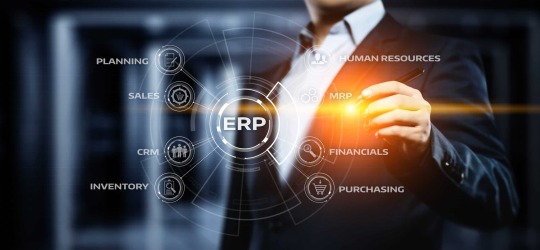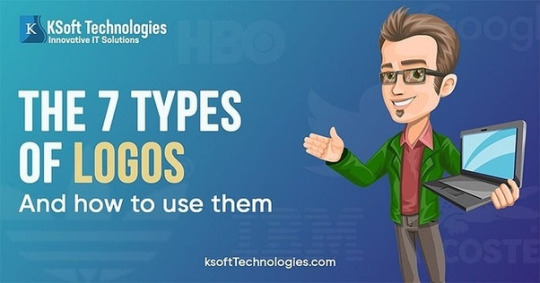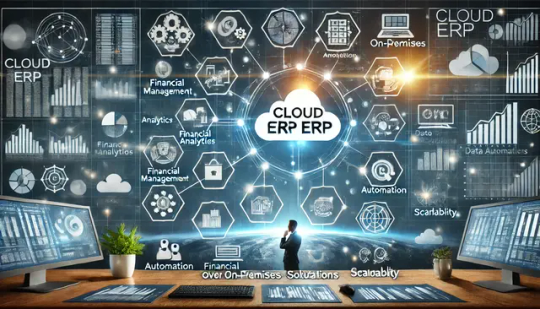#erp development
Explore tagged Tumblr posts
Text

#custom erp#flutter mobile development#web and mobile app development company#app development services#erp development#digital consulting#ecommerce website development company
3 notes
·
View notes
Text
#hire shopify experts#shopify custom sections#shopify theme customization#shopify development services#shopify development company#Software development services#Software Development company#Hire software developers#Open Source Implementation#Ecommerce Factory#ERP Development#Refining Existing Applications#Conversion Rate Optimization#Don’t Just Update#Upgrade!#Startup Solutions#ADA Compliant Website#Online Marketplace Development#Theme Development#Platform Migration
2 notes
·
View notes
Text
ERP Trends 2024: Unveiling the Future of ERP Systems.
Visit Website, Glasier Inc.
Our Blogs
Other Services,
erp software development company
hospital management system
Hire Angular Developers
Hire SaaS developer
Hire Flutter Developers
Hire ReactJs Developers
#Custom ERP software development#ERP development services#ERP development#ERP software development services#ERP development Company#app development cost#app development#website#ios application development services#offshore developers#hire dedicated reactjs developers
1 note
·
View note
Text
ERP Development Company
Indicorp is one of the best ERP Development Company for organizations that want to grow their businesses. Our services especially include SAP implementation with all kinds of functional and technical configurations due to our rich working experience with them.

0 notes
Text

https://www.istudiotech.in/custom-software-development-company-in-chennai/
iStudio Technologies is a top-rated custom software development company in Chennai offering scalable, secure, and high-performance software solutions tailored to your business needs. Their services span across enterprise software, SaaS platforms, ERP, CRM, and industry-specific applications. With a customer-focused approach and agile development process, they help businesses automate workflows and achieve digital transformation efficiently.
#Custom Software#Software Development Chennai#Enterprise Software#ERP Development#CRM Solutions#Business Automation#Tailored Software#SaaS Applications#IT Company Chennai#Software Developers India
0 notes
Text
How Much Does ERP Software Development Really Cost in 2025? A Complete Breakdown
In today’s fast-paced digital landscape, businesses can no longer rely on scattered systems or spreadsheets to manage operations. Enter ERP (Enterprise Resource Planning) software—a central hub that brings everything from HR to inventory under one roof. But one question continues to dominate boardroom discussions in 2025: “How much does ERP software development really cost?” Let’s break it down,…
0 notes
Text
https://cosysta.com/custom-erp-development/
0 notes
Text
Odoo Hospital Management System - Features and Benefits
#odoo#hospital management system#hospital management software#erpsoftware#erpsolutions#odoo erp#erp development#odoo erp development#erp system
0 notes
Text
#ERP Development Services#ERP Development Company#ERP development Process#ERP Software Development in India#ERP Software Development for Businesses#ERP Software Development near me#ERP Software Development#ERP Development#ERP Services#Billing & Invoice Software Development Company in Noida#Billing & Invoice Software Development Company#Billing & Invoice Software Development Company Near me#Billing & Invoice Software Development in Noida#Mobile App Development Company#Mobile App Development Company near me#App Development#App Development Company#App Development Company in India#App Development Company in Noida#App Development Company in Delhi/Ncr#Best App Development Company Near me#android app development company#web design company#Software Development Company in Noida#ios mobile app development in Noida#ios mobile app development company in Noida#Best App Development Company in Noida#App Development Company Near me#Software Development Company in Delhi/Ncr#Software Development Company in India
0 notes
Text
#ERP Development#ERP Development Company#ERP Development Services#erp system#erp software#enterprise resource planning
0 notes
Text
7 Types of Logos: How to Use Them for Your Custom Ecommerce Website

A logo is an image that symbolizes your business. But did you know there are 7 different types of logos?
Though they’re all a combination of typography and images, each type of logo gives your brand a different feel. And since your logo is the first thing new customers will see, especially on a custom ecommerce website, you want to make sure you get it right.
Here are the 7 types of logos you need to know about:
1. Monogram (or lettermark) logos 2. Wordmark logos 3. Pictorial mark logos 4. Abstract logo marks 5. Mascot logos 6. The combination mark 7. The emblem
Want to know how to choose the best logo type for your business? Read on!
1. Monogram logos (or lettermarks)
Monogram logos or lettermarks are logos that consist of letters, usually brand initials. IBM, CNN, HP, HBO… Noticing a pattern, yes? They’re the initialisms of a few famous businesses with rather lengthy names. With 2 or 3 words to remember, they’ve each turned to using their initials for brand-identification purposes. So it makes perfect sense for them to use monograms — sometimes called lettermark logos — to represent their organizations.
A lettermark is a typography-based logo that’s comprised of a few letters, usually a company’s initials. The lettermark is all about simplicity. By utilizing just a few letters lettermark logos are effective at streamlining any company brand if they have a long name. For example, how much easier is it to say — and remember — NASA versus the National Aeronautics and Space Administration?
Because the focus is on initials, the font you choose (or create) is very important to make sure your logo is not only on-theme with what your company does, but also legible when you print on business cards. Also, if you’re not an established business already you may want to add your full business name below the logo so people can begin to learn who you are right away.
2. Wordmarks (or logotypes)
Similar to a lettermark, a wordmark or logotype is a font-based logo that focuses on a business’ name alone. Think Visa and Coca-Cola. Wordmark logos work really well when a company has a succinct and distinct name. Google’s logo is a great example of this. The name itself is catchy and memorable so, when combined with strong typography, the logo helps create strong brand recognition.
Also, like with a lettermark logo, typography will be an important decision. Since the focus will be on your name, you’ll want to pick a font — or create a font — that captures the essence of what your business does. For example, fashion labels tend to use clean, elegant fonts that feel high-end, while legal or government agencies almost always stick to traditional, “heavier” text that feels secure.
When to use lettermark and wordmark logos:
Consider a lettermark logo if your business happens to have a long name. Condensing the business name into initials will help simplify your design and likewise, customers will have an easier time recalling your business and your logo.
A wordmark is a good decision if you’re a new business and need to get your name out there, just make sure that name is short enough to take advantage of the design. Anything too long can look too cluttered.
A wordmark logo is a good idea if you have a distinct business name that will stick in customers’ minds. Having your name in a great, designed font will make your brand all the stickier.
Both lettermark and wordmark logos are easy to replicate across marketing material and branding thus making them highly adaptable options for a new, and developing, business.
Remember that you’ll want to be scrupulous when creating a lettermark or a wordmark. Your business name in a font alone likely won’t be distinct enough to capture the nuance of your brand. So make sure you hire a professional who’ll have an eye for detail.
3. Pictorial marks (or logo symbols)
A pictorial mark (sometimes called brand mark or logo symbol) is an icon — or graphic-based logo. It’s probably the image that comes to mind when you think “logo”: the iconic Apple logo, the Twitter bird, the Target bullseye. Each of these companies’ logos is so emblematic, and each brand so established, that the mark alone is instantly recognizable. A true brand mark is only an image. Because of this, it can be a tricky logo type for new companies, or those without strong brand recognition, to use.
mark is what image to choose. This is something that will stick with your company its entire existence. You need to think about the broader implications of the image you choose: do you want to play on your name (like John Deere does with their deer logo)? Or are you looking to create deeper meaning (think how the Snapchat ghost tells us what the product does)? Or do you want to evoke an emotion (as the World Wildlife foundation does with their stylized image of a panda — an adorable and endangered species)?
4. Abstract logo marks
An abstract mark is a specific type of pictorial logo. Instead of being a recognizable image — like an apple or a bird — it’s an abstract geometric form that represents your business. A few famous examples include the BP starburst-y logo, the Pepsi divided circle and the strip-y Adidas flower. Like all logo symbols, abstract marks work really well because they condense your brand into a single image. However, instead of being restricted to a picture of something recognizable, abstract logos allow you to create something truly unique to represent your brand.
The benefit of an abstract mark is that you’re able to convey what your company does symbolically, without relying on the cultural implications of a specific image. Through color and form, you can attribute meaning and cultivate emotion around your brand. (As an example, think about how the Nike swoosh implies movement and freedom).
5. Mascots
Mascot logos are logos that involve an illustrated character. Often colorful, sometimes cartoonish, and most always fun, the mascot logo is a great way to create your very own brand spokesperson — er, spokes-character(?).
A mascot is simply an illustrated character that represents your company. Think of them as the ambassador for your business. Famous mascots include the Kool-Aid Man, KFC’s Colonel and Planter’s Mr. Peanut.
Mascots are great for companies that want to create a wholesome atmosphere by appealing to families and children. Think of all those mascots at sporting events and the great dynamic they create by getting involved with the audience!
When to use picture and symbol logos:
A pictorial mark alone can be tricky. It’s effective if you already have an established brand but that’s not a hard and strict rule. You can use brandmarks to your advantage to convey what your business does graphically if your name is too long, and they can also be used effectively to convey a desired idea or emotion.
Pictorial and abstract marks also work quite well for global commerce if, for example, a business name doesn’t lend itself well to translation.
A pictorial mark however may not be the best idea if you anticipate changes to your business model in the future. You may start off selling pizzas and use a pizza in your logo but what happens when you start to selling sandwiches or burgers, or even produce?
Abstract marks allow you to create a completely unique image for your business, but are best left to design professionals who understand how color, shape and structure combine to create meaning.
Think about creating a mascot if you are trying to appeal to young children or families. One big benefit of a mascot is it can encourage customer interaction so it’s a great tool for social media marketing as well as real-world marketing events. I mean, who doesn’t want to take a selfie with the Pillsbury Doughboy?
Remember that a mascot is only one part of a successful logo and brand, and you may not be able to use it across all your marketing material. For example, a highly detailed illustration may not print well on a business card. So put some consideration in the next type of logo design below, the combination mark.
6. The combination mark
A combination mark is a logo comprised of a combined wordmark or lettermark and a pictorial mark, abstract mark, or mascot. The picture and text can be laid out side-by-side, stacked on top of each other, or integrated together to create an image. Some well-known combination mark logos include Doritos, Burger King and Lacoste.
Because a name is associated with the image, a combination mark is a versatile choice, with both the text and icon or mascot working together to reinforce your brand. With a combination mark, people will also begin to associate your name with your pictorial mark or mascot right away! In the future, you may be able to rely exclusively on a logo symbol, and not have to always include your name. Also, because the combination of a symbol and text creates a distinct image together, this type of logo is usually easier to trademark than a pictorial mark alone.
7. The emblem
An emblem logo consists of font inside a symbol or an icon; think badges, seals and crests. These logos tend to have a traditional appearance about them that can make a striking impact, thus they are often the go-to choice for many schools, organizations or government agencies. The auto industry is also very fond of emblem logos. While they have a classic style, some companies have effectively modernized the traditional emblem look with logo designs fit for the 21st century (think of Starbucks’ iconic mermaid emblem, or Harley-Davidson’s famous crest).
But because of their lean towards higher detail, and the fact that the name and symbol are rigidly entwined, they can be less versatile than the aforementioned types of logos. An intricate emblem design won’t be easy to replicate across all branding. For business cards, a busy emblem may shrink so small before it becomes too difficult to read. Also, if you plan on embroidering this type of logo on hats or shirts, then you’ll really have to create a design that is on the simple side or it just won’t be possible. So as a rule keep your design uncomplicated and you’ll walk away with a strong, bold look that’ll make you look like the consummate professional.
When to use a combination mark or emblem logos:
A combination mark is a great choice for pretty much any business out there. It’s versatile, usually highly unique, and the most popular choice of logo among prominent companies. (We also see A LOT of combination mark logos get created on 99designs.)
An emblem’s traditional look might be favored by lots of public agencies and schools but it can also serve any up-and-coming private business quite well, especially those in the food and beverage industry: think beer labels and coffee cups (Starbucks!). But remember to play it safe when it comes to detail. You still want a design you’ll be able to print neatly across all of your marketing material.
There you have it. A breakdown of all the types of logos out there.
Want more logo design tips? Learn how to design a logo here.
#app development services#custom erp#web and mobile app development company#ecommerce development services#flutter mobile development#digital consulting#custom ecommerce website#erp development
3 notes
·
View notes
Text
#shopify partner login#hire shopify experts#shopify custom sections#hire shopify developers#shopify development company#shopify development services#Software Development services#software development company#hire software developers#Open Source Implementation#Ecommerce Factory#ERP Development#Refining Existing Applications#Conversion Rate Optimization#Don’t Just Update#Upgrade!#Startup Solutions#ADA Compliant Website#Online Marketplace Development#Theme Development#Platform Migration
0 notes
Text

Cost-Effective ERP Development with Odoo Discover how to optimize ERP implementation with Odoo's modular, open-source platform. This blog outlines strategies such as defining business requirements, using pre-configured modules, hiring skilled developers, and focusing on essential customizations. By leveraging cloud hosting and long-term support, you can minimize costs and maximize the value of your ERP. Learn how Odoo ensures scalable, tailored solutions for businesses of any size, helping you stay ahead while managing resources wisely.
0 notes
Text
Revolutionizing Business with Custom ERP Development Solutions
Looking for a reliable ERP development company to streamline your business processes? Our tailored ERP solutions are designed to integrate seamlessly with your operations, improving efficiency and decision-making. From automation to real-time analytics, we provide innovative tools to empower your organization. Discover how our expertise in ERP development can transform your business today!

0 notes
Text
Key Advantages of Cloud ERP Over On-Premises Solutions
In today’s fast-paced business environment, companies are constantly seeking ways to enhance operational efficiency, reduce costs, and scale rapidly. ERP Development has emerged as a crucial enabler in this journey, offering robust solutions for managing core business processes. While traditional on-premises ERP systems have been around for decades, cloud ERP solutions are now leading the charge in transforming how businesses operate. This article delves into the key advantages of cloud ERP over on-premises solutions, offering insights, examples, and actionable takeaways.

Understanding Cloud ERP and On-Premises ERP
On-Premises ERP: Installed locally on a company’s servers and infrastructure, these systems require significant investment in hardware, software licenses, and IT maintenance.
Cloud ERP: Hosted on a vendor’s cloud platform, these solutions are accessible via the internet and operate on a subscription-based model.
The shift to cloud-based solutions represents a paradigm change, offering a host of advantages over their traditional counterparts.
Key Advantages of Cloud ERP Over On-Premises Solutions
1. Cost Efficiency
One of the most significant advantages of cloud ERP is its cost-effectiveness.
Lower Upfront Costs: Unlike on-premises ERP, which requires substantial investments in hardware, cloud ERP operates on a pay-as-you-go subscription model.
Reduced Maintenance Costs: With cloud ERP, businesses avoid the ongoing expenses of maintaining and upgrading servers, as these tasks are managed by the vendor.
Scalability Without Financial Strain: Companies can add users or features as needed, without the financial burden of purchasing additional hardware or licenses.
2. Scalability and Flexibility
Adaptable to Growth: Cloud ERP systems allow businesses to scale up or down based on their operational needs. Whether adding new modules or expanding to new geographies, cloud ERP provides the flexibility to grow without limitations.
Customizable Features: Modern cloud ERP solutions offer a range of modules that can be tailored to specific industries, making them ideal for companies of all sizes.
3. Accessibility and Remote Work
Access Anywhere, Anytime: Cloud ERP systems are accessible via web browsers, allowing employees to work from any location with an internet connection.
Ideal for Remote Work: With the rise of remote and hybrid work models, cloud ERP ensures uninterrupted access to critical business processes, enhancing productivity and collaboration.
4. Faster Implementation
Quicker Deployment: Cloud ERP systems typically have shorter implementation timelines compared to on-premises solutions, which require extensive hardware setup and software installation.
Seamless Updates: Vendors handle system updates and upgrades in the background, ensuring businesses are always using the latest technology.
5. Enhanced Security and Compliance
Data Security: Cloud ERP providers invest heavily in advanced security measures, including encryption, firewalls, and multi-factor authentication, to protect sensitive business data.
Regular Compliance Updates: Vendors ensure that their systems comply with the latest industry regulations, reducing the compliance burden on businesses.
6. Integration and Automation
Seamless Integration: Cloud ERP easily integrates with other cloud-based tools and software, such as CRM systems, e-commerce platforms, and analytics tools.
Automation of Tasks: Features like automated invoicing, payroll processing, and inventory management reduce manual intervention, improving efficiency and accuracy.
7. Real-Time Data and Advanced Analytics
Instant Insights: Cloud ERP systems provide real-time data access, enabling businesses to monitor performance and make informed decisions.
Advanced Analytics: Many cloud ERP platforms include AI-powered analytics tools that help identify trends, forecast demand, and optimize operations.
8. Disaster Recovery and Backup
Automatic Backups: Cloud ERP systems routinely back up data, ensuring it is secure and retrievable in the event of hardware failure or cyberattacks.
Disaster Recovery: Vendors maintain robust disaster recovery protocols, ensuring business continuity during unforeseen events.
Real-World Applications of Cloud ERP
Case Study: A Retail Chain’s Transition to Cloud ERP
A mid-sized retail chain implemented a cloud ERP solution to replace its outdated on-premises system. The results included:
A 40% reduction in IT costs due to the elimination of hardware maintenance.
Improved inventory management across multiple store locations.
Real-time sales tracking, enabling better decision-making during peak seasons.
Case Study: Manufacturing Firm Embraces Cloud ERP
A manufacturing company adopted a cloud ERP platform to support its global expansion. Benefits included:
Faster implementation across new facilities.
Streamlined supply chain operations with IoT integration.
Enhanced compliance with international trade regulations.
Actionable Takeaways for Businesses
Evaluate Your Needs: Assess your current ERP setup and determine whether a cloud-based solution aligns with your operational goals and budget.
Choose a Reliable Vendor: Partner with a trusted ERP Development provider who can tailor solutions to your specific industry and growth trajectory.
Plan for Transition: While cloud ERP implementation is faster, a strategic rollout ensures minimal disruption to daily operations.
Invest in Employee Training: Equip your team with the knowledge to maximize the benefits of cloud ERP.
Leverage Analytics: Utilize the advanced analytics features of cloud ERP to drive data-driven decisions.
Conclusion
The advantages of cloud ERP over on-premises solutions are clear: reduced costs, enhanced scalability, accessibility, and advanced features like automation and real-time analytics. As businesses navigate the complexities of digital transformation, ERP Development is no longer just a choice but a strategic imperative.
If you’re considering a cloud ERP solution for your business, let DGL IT Services guide you through the process. Our tailored ERP solutions are designed to empower your organization with the tools needed to thrive in a competitive market. Contact us today to take the first step toward operational excellence.
0 notes